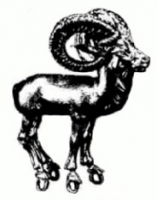- LIEFERUNG AM NÄCHSTEN TAG
- versandkostenfrei innerhalb des deutschen Festlands
- KOSTENLOSE RÜCKSENDUNG
- 30 Tage Rückgabe
120x117 cm Hand Embroidered suzani from Uzbekistan.Tablecloth, Wall hanging, Bedspread,Bedcover No.UZ-47
Hand Embroidered suzani from Uzbekistan.Tablecloth, Wall hanging, Bedspread,Bedcover.
Actual colors may vary from those shown due to the nature of photographing and monitor color settings.
Suzani handmade 120x117 cm
-silk/cotton foundation
-silk embroideries
These intricate and lovingly-made textiles can be used in so many ways to add texture, romance, and delight to any room.
"Suzani" means needlework, but to most collectors, the word has a more specific meaning: "suzani" is synonymous with the glorious embroideries of Uzbekistan, in Central Asia. In recent years, we've witnessed a remarkable revival of this old traditional art form.
These textiles are pretty complex, which indicates their importance. In fact, suzanis were part of a bride’s dowry, generally started at the birth of a daughter and continued with the help of family and friends until the bride’s dowry was complete and ready to be presented to the groom at the wedding. It was a symbol of the family’s status, as the wealthier families could put more time and effort into making their suzanis. So, it was important to make really great suzanis, as your family would be judged by them. The suzani itself was used as the coverlet for the bridal bed on the wedding night, and later as decoration.
Suzanis usually have a cotton (sometimes silk) fabric base, which is embroidered in silk or cotton thread. The dye materials used include madder, cochineal, indigo, walnut, pomegranate, and sumak, along with assorted others. On lustrous silks, the results are deep, rich, mellow, and glowing.Popular design motifs include sun and moon disks, meandering grapevines along the border and stylized botanical motifs, flowers, especially tulips, carnations, irises and pomegranate, a traditional symbol of fertility, and occasional fish and birds.Each Suzani produced reflect the talent, wealth and prosperity of the family while the embroidery motifs carry symbolic meaning relating to fertility, protection, health and household stability.
The story of each Suzanis is as rich as their colors, as intricate as the designs that cover their surfaces. The fabrics are often lightly dyed to produce a soft beige tint, a so-called “tea wash.” Occasionally other colors are used for the ground fabrics. For large Suzanis, several of the fabric strips are first sewn loosely together, an elder of the tribe or village draws her design on the fabric after which it is taken apart again. Each female member of the family embroiders a separate strip. The pieces are then re-assembled as one.
Traditionally Suzani’s are made entirely by hand and can take as long as 18 months to complete.The oldest surviving suzanis are from the late 18th and early 19th centuries, but it seems likely that they were in use long before that.
Now gorgeous contemporary embroideries decorate not only Uzbek homes, but also grace European and American houses. Fortunately, we now have access to beautiful contemporary textiles that are a natural outgrowth of the old traditions--at very reasonable prices. Today Suzani are used to enhance any interior design, be traditional, eclectic or modern. They are used as pillows, upholstery fabrics, bedspreads, table covers or wall hangings.
Dry clean only.




















